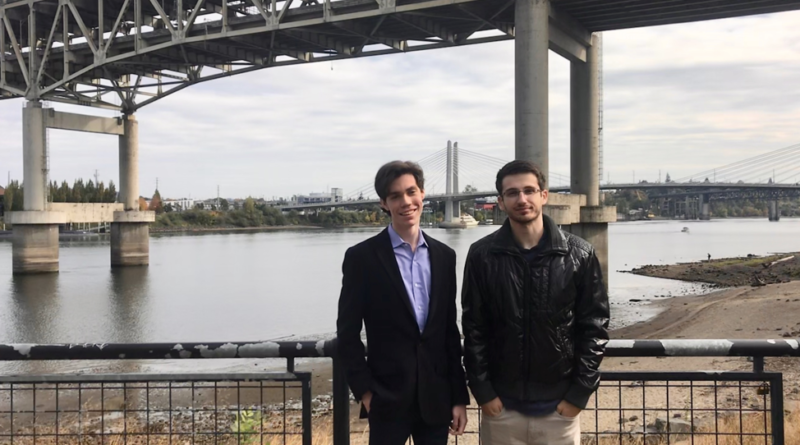To [B] or Not to [B]
Lynn Student and Alum Present at Academic Conference
On Friday Oct. 11, Brendan Donahue and Will Conway presented their research paper, titled “To [B] or not to [B]: a Derridean Analysis of Ironic Emoji Signifiers in Memetic Messaging”, at the Semiotic Society of America’s 44th annual conference in Portland, Oregon.
Donahue, Conway and professor Eric Hamm co-authored the paper centered around the cultural and ironic implications of the red [B] emoji found on the Apple emoji keyboard. Donahue and Conway first realized the potential for their research when studying ‘Of Grammatology’ by Jaqcues Derrida during professor Hamm’s DBR course on existentialism.
“‘Of Grammatology’ challenges the conventional understanding of language,” said Donahue, sophomore, in reference to the literary inspiration for his research.
Founded in 1975, the Semiotic Society of America hosts an annual academic conference and publishes The American Journal of Semiotics. The 44th SSA call for papers – an announcement revealing that year’s conference theme – invited academics to submit research on the semiotics of borders and the borders of semiotics. This year’s call for papers requested research concerning signs or expressions of inclusion and exclusion, the relationship of boundaries to imagination and the limits and possibilities of semiotic inquiry.
“The [B] exists in an age marked by an entire generations’ overstimulation,” said Conway, Lynn alumnus. “Unlike other symbols, it does not denote any immediately identifiable meaning or instruction beyond its absurdity, finding it outside the realm of our conventional understanding of signs and symbols to society. That’s what makes it such an interesting entity to analyze.”
Donahue and Conway presented for twenty minutes and spent ten minutes answering questions from semioticians, theologians, mathematicians and other scholars regarding their research.
“There’s something fundamentally different about presenting in front of specialists in a field. The nature of the questions are different; the reasons why they’re intrigued by your presentation are different,” said Conway. “Given all that, I’m still surprised how supportive people at the Semiotics Society of America were. Overall, I think it was an extraordinarily educational experience.”
Though this was Conway’s and Donahue’s debut as academics, their work is far from done. Conway looks forward to presenting on Jean-Paul Sartre and the disabled body at a conference in Pittsburg alongside Professor Hamm. Donahue plans to author another project for the 45th Semiotic Society of America conference next year.



